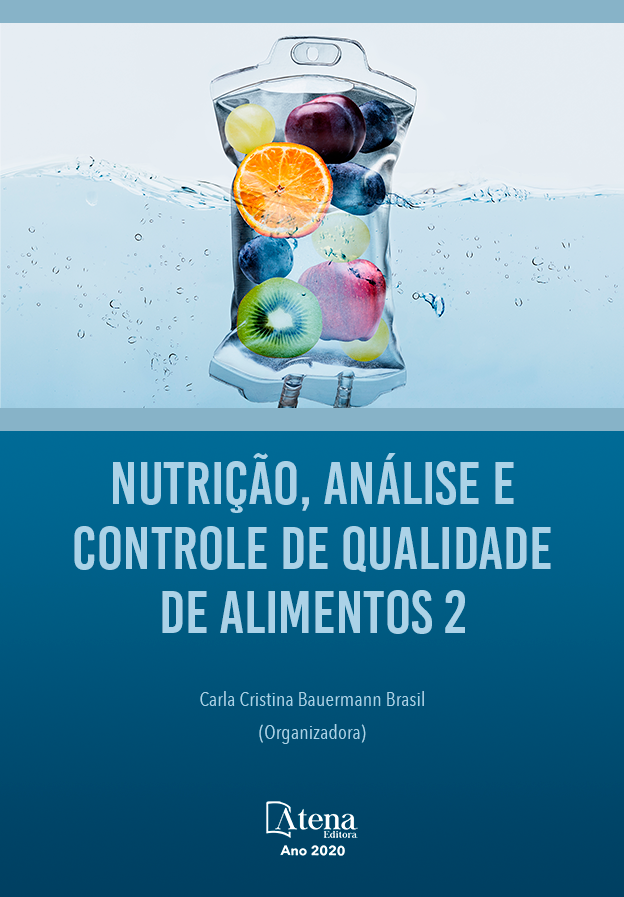
AVALIAÇÃO DA AÇÃO DOS EXTRATOS DAS FRUTAS AMAZÔNICAS MURICI (BYRSONIMA CRASSIFOLIA) E TAPEREBÁ (SPONDIA MOMBIN) SOBRE A VIABILIDADE CELULAR EM CÉLULAS DE CÂNCER DE OVÁRIO PARENTAL E RESISTENTE À CISPLATINA
A região Amazônica destaca-se por possuir uma grande quantidade de frutas nativas fontes de compostos bioativos, com aromas e sabores diversificados e elevado potencial econômico e nutricional. As frutas murici (Byrsonima crassifolia (L.) Kunth e B. verbascifolia (L.) DC.) e taperebá (Spondias mombin) são frutas com potencial para o uso na prevenção de doenças, incluindo câncer. O presente estudo tem como objetivo investigar o uso dos extratos destas frutas como ferramenta auxiliar na modulação da viabilidade, de linhagens celulares de câncer de ovário parental (A2780) e resistente à cisplatina (ACRP). Os extratos foram caracterizados quanto ao perfil de carotenóides por cromatografia líquida de alta eficiência (HPLC), teor fenólico total foi avaliado por ensaio Folin – Ciocalteu, e atividade antioxidante através de diferentes ensaios de determinação do conteúdo de 2,2-difenil-1-picril-hidrazil (DPPH), análise de conteúdo de 22,20-azino-bis (ácido 3-etilbenzotiazolina-6-sulfônico) (TEAC), redução do ferro (FRAP) e capacidade de absorvência radical de oxigênio (ORAC). Os extratos foram testados quanto ao seu efeito na viabilidade do câncer de ovário A2780 e sua linha celular derivada resistente à cisplatina (CDDP), chamada ACRP, por ensaio MTT (3- (4,5-dimetiltiazol-2-il) -2,5-difeniltetrazólio). Os extratos de murici e taperebá foram caracterizados como fontes importantes de carotenóides totais, destacando luteína e β-criptoxantina, respectivamente. Os extratos das frutas apresentaram-se como fontes de compostos fenólicos, sendo o conteúdo maior no extrato de murici e apresentaram ainda elevada atividade antioxidante. Os extratos das frutas murici e taperebá exibiram uma forte bioatividade, inibindo a viabilidade das células A2780 e ACRP em 76,37% e 78,37%, respectivamente. Os resultados abrem novas perspectivas para o desenvolvimento de estratégias terapêuticas inovadoras no câncer de ovário, inclusive com resistência à cisplatina, usando os extratos de frutas da Amazônia.
AVALIAÇÃO DA AÇÃO DOS EXTRATOS DAS FRUTAS AMAZÔNICAS MURICI (BYRSONIMA CRASSIFOLIA) E TAPEREBÁ (SPONDIA MOMBIN) SOBRE A VIABILIDADE CELULAR EM CÉLULAS DE CÂNCER DE OVÁRIO PARENTAL E RESISTENTE À CISPLATINA
-
DOI: 10.22533/at.ed.92420271016
-
Palavras-chave: Byrsonima crassifolia; carotenóides; cisplatina; câncer de ovário, Spondias mombin
-
Keywords: Byrsonima crassifolia; carotenoids; cisplatin; ovarian cancer, Spondias mombin
-
Abstract:
Amazon region stands out for having vast quantities of native fruits that are sources of bioactive compounds, with varying aromas and tastes, and high economic and nutritional potential. Murici fruits (Byrsonima crassifolia (L.) Kunth and B. verbascifolia (L.) DC.) and tapereba (Spondias mombin) are fruits which may be used in disease prevention, including cancer. The present study aims to investigate the use of extracts from these fruits as an auxiliary tool in modulating the viability of cell lines of parental ovarian cancer (A2780) and resistant to cisplatin (ACRP). The extracts were characterized according to the carotenoid profile by high performance liquid chromatography (HPLC), total phenolic content was evaluated by Folin - Ciocalteu assay, and antioxidant activity through different tests to determine the content of 2,2-diphenyl-1- picril-hydrazil (DPPH), content analysis of 22,20-azino-bis (3-ethylbenzothiazoline-6-sulfonic acid) (TEAC), iron reduction (FRAP) and radical oxygen absorption capacity (ORAC). The extracts were evaluated by MTT assay (3- (4,5-dimethylthiazol-2-yl) -2, 5-diphenyltetrazolium) for their impact on the viability of A2780 ovarian cancer and its cisplatin-resistant derived cell line (CDDP), named ACRP. The extracts of murici and tapereba were characterized as important sources of total carotenoids, highlighting lutein and β-cryptoxanthin, respectively. The fruit extracts presented themselves as sources of phenolic compounds, with the highest content in the murici extract and still presented high antioxidant activity. The extracts of murici and tapereba fruits exhibited strong bioactivity, inhibiting the viability of A2780 and ACRP cells by 76.37% and 78.37%, respectively. The results open new perspectives for the development of innovative therapeutic approaches in ovarian cancer, including resistance to cisplatin, using fruit extracts from the Amazon.
-
Número de páginas: 15
- Vanessa Rosse de Souza
- Thuane Passos Barbosa Lima
- Mariana Concentino Menezes Brum
- Isabella dos Santos Guimarães
- Otniel Freitas-Silva
- Etel Rodrigues Pereira Gimba
- Anderson Junger Teodoro


